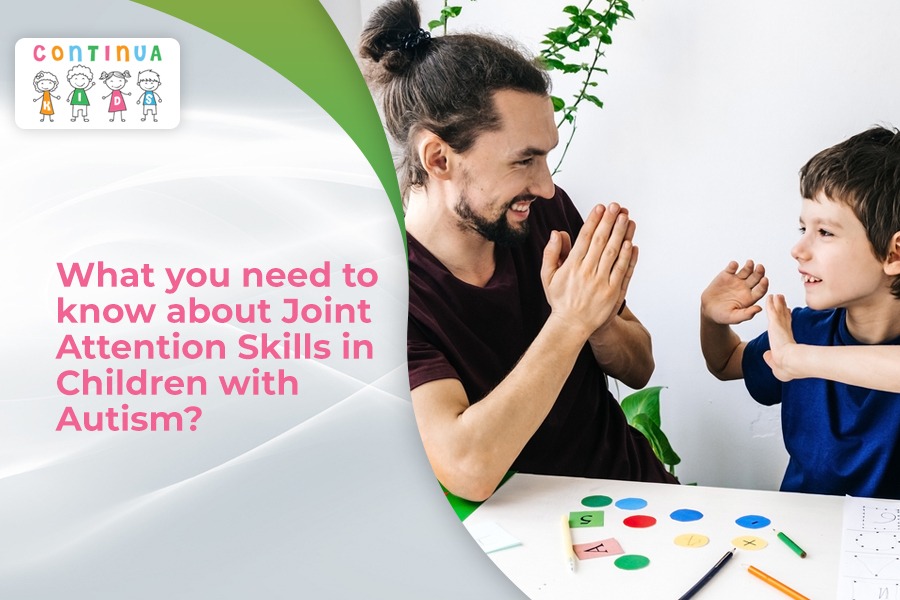Strategies for Enhancing Attention Skills in Special Education: A Practical Guide With enthusiasm, let’s navigate through the intriguing topic related to Strategies for Enhancing Attention Skills in Special Education: A Practical Guide. Let’s weave interesting information and offer fresh perspectives to the readers.
Strategies for Enhancing Attention Skills in Special Education: A Practical Guide
Attention is a fundamental skill essential for learning, social interaction, and overall well-being. For students with special needs, attention difficulties can present significant challenges, impacting their academic progress, social integration, and emotional regulation. This blog post explores various strategies that educators can implement to enhance attention skills in special education, providing actionable insights and practical tips.
Understanding Attention Difficulties in Special Education:
Attention difficulties can manifest in various ways, including:
- Inattention: Difficulty focusing, easily distracted, struggling to follow instructions, losing track of tasks, and exhibiting daydreaming behavior.
- Hyperactivity: Restlessness, fidgeting, difficulty sitting still, excessive talking, and interrupting others.
- Impulsivity: Acting without thinking, making hasty decisions, and struggling with self-control.

These difficulties can stem from various factors, including:
- Neurodevelopmental disorders: ADHD, autism spectrum disorder, learning disabilities.
- Sensory processing issues: Over-sensitivity to sights, sounds, or touch.
- Emotional and behavioral challenges: Anxiety, depression, trauma.
- Environmental factors: Distracting classroom environment, lack of structure and routine.
Strategies for Enhancing Attention Skills:
1. Create a Structured and Organized Learning Environment:
- Establish clear routines and expectations: Begin each lesson with a clear outline of objectives, activities, and transitions.
- Minimize distractions: Reduce visual clutter in the classroom, use noise-canceling headphones, and provide designated quiet spaces for students who need a break.
- Use visual aids and organizers: Employ graphic organizers, checklists, and visual timers to enhance comprehension and provide structure.
- Break down tasks into smaller, manageable steps: This approach reduces overwhelm and promotes a sense of accomplishment.
- Provide frequent breaks: Regular short breaks allow students to refocus and recharge.

2. Engage Students through Multi-Sensory Learning:
- Incorporate various sensory modalities: Engage students through visual aids, auditory cues, tactile activities, and kinesthetic movement.
- Use interactive games and activities: Make learning fun and engaging by incorporating games, puzzles, and hands-on projects.
- Provide opportunities for movement: Allow students to stand, move around, or use fidget toys to channel excess energy.
- Vary activities and presentation styles: Switch between different activities to maintain student engagement and prevent boredom.

3. Implement Behavior Management Strategies:
- Positive reinforcement: Reward desired behaviors with praise, tokens, or privileges to encourage focus and effort.
- Use clear and consistent consequences: Establish consequences for off-task behavior, ensuring they are age-appropriate and delivered calmly.
- Teach self-regulation techniques: Introduce strategies like deep breathing, mindfulness exercises, and self-monitoring to help students manage their emotions and behaviors.
- Implement a token economy system: Reward students for positive behaviors with tokens that can be exchanged for desired rewards.
- Utilize visual cues and reminders: Use visual prompts, timers, and checklists to help students stay on task and manage their time effectively.
4. Foster Social-Emotional Learning:
- Promote a positive classroom climate: Create a supportive and inclusive environment where students feel safe and valued.
- Teach social skills: Provide opportunities for students to practice social interactions and learn appropriate communication skills.
- Address underlying emotional challenges: Work with parents and specialists to address any emotional or behavioral issues that may be contributing to attention difficulties.
- Promote self-awareness and self-management: Encourage students to identify their own triggers and develop coping mechanisms to manage their emotions.
5. Collaborate with Parents and Specialists:
- Maintain open communication: Regularly communicate with parents about their child’s progress, challenges, and strategies.
- Seek professional support: Consult with specialists such as school psychologists, occupational therapists, and speech-language pathologists for assessment and intervention.
- Develop a shared plan: Work collaboratively with parents and specialists to create a comprehensive plan that addresses the student’s individual needs.
6. Utilize Technology to Enhance Attention:
- Interactive learning apps and websites: Utilize educational apps and websites that offer engaging and interactive learning experiences.
- Adaptive technology: Explore assistive technology tools like text-to-speech software, screen readers, and word prediction programs to support students with learning difficulties.
- Digital timers and visual reminders: Use digital timers and visual reminders to help students manage their time and stay on task.
7. Encourage Self-Advocacy and Empowerment:
- Teach students about their attention challenges: Help them understand their difficulties and how they impact their learning.
- Empower students to identify their own strategies: Encourage students to experiment with different techniques and find what works best for them.
- Provide opportunities for self-monitoring and reflection: Encourage students to track their progress, identify their strengths and areas for improvement, and set personal goals.
Actionable Insights for Educators:
- Individualize interventions: Recognize that each student’s needs are unique and tailor interventions accordingly.
- Use data-driven decision-making: Track student progress and adjust strategies based on ongoing assessment.
- Promote a positive and supportive learning environment: Create a classroom where students feel safe, valued, and encouraged to learn.
- Collaborate with parents and specialists: Work together to develop a comprehensive plan that addresses the student’s individual needs.
- Be patient and persistent: Improving attention skills takes time and effort. Celebrate small successes and continue to support students in their journey.
Conclusion:
Enhancing attention skills in special education requires a multifaceted approach that addresses the individual needs of each student. By implementing the strategies outlined in this blog post, educators can create a supportive learning environment that fosters attention, engagement, and academic success. Remember, with patience, persistence, and a collaborative approach, we can empower students with special needs to reach their full potential.
Closure Strategies for Enhancing Attention Skills in Special Education: A Practical Guide
Thus, we hope this article has provided valuable insights into Strategies for Enhancing Attention Skills in Special Education: A Practical Guide. We hope you find this article informative and beneficial. See you in our next article!
Related Articles: Strategies for Enhancing Attention Skills in Special Education: A Practical Guide





Leave a Comment